Related Research Articles

The Compact Disc-Interactive is a digital optical disc data storage format that was mostly developed and marketed by Dutch company Philips. It was created as an extension of CDDA and CD-ROM and specified in the Green Book specifications, co-developed by Philips and Sony, to combine audio, text and graphics. The two companies initially expected to impact the education/training, point of sale, and home entertainment industries, but CD-i eventually became best known for its video games.

Starship Titanic is an adventure game developed by The Digital Village and published by Simon & Schuster Interactive. It was released in April 1998 for Microsoft Windows and in March 1999 for Apple Macintosh. The game takes place on the eponymous starship, which the player is tasked with repairing by locating the missing parts of its control system. The gameplay involves solving puzzles and speaking with the bots inside the ship. The game features a text parser similar to those of text adventure games with which the player can talk with characters.

Adobe Shockwave is a discontinued multimedia platform for building interactive multimedia applications and video games. Developers originate content using Adobe Director and publish it on the Internet. Such content could be viewed in a web browser on any computer with the Shockwave Player plug-in installed. MacroMind originated the technology; Macromedia acquired MacroMind and developed it further, releasing Shockwave Player in 1995. Adobe then acquired Shockwave with Macromedia in 2005. Shockwave supports raster graphics, basic vector graphics, 3D graphics, audio, and an embedded scripting language called Lingo.

Titanic: Adventure Out of Time is a 1996 point-and-click adventure game developed by CyberFlix and published in the United States and United Kingdom by GTE Entertainment and Europress respectively, for Microsoft Windows and Macintosh. It takes place in a virtual representation of the RMS Titanic, with the player assuming the role of a British spy who has been sent back in time to the final night of the Titanic and must complete a previously failed mission to prevent World War I, the Russian Revolution, and World War II from occurring. The gameplay involves exploring the ship and solving puzzles. There are multiple outcomes and endings to the game depending on the player's interactions with characters and use of items.
mTropolis was an open-architecture multimedia programming application aimed at enabling rapid development of multimedia titles. It was developed by mFactory and introduced in 1995. It introduced object-oriented concepts such as reusable objects, modifiers and behaviors into the multimedia authoring space dominated by Macromedia's Director software. mTropolis was bought in 1997 by Quark, which moved development from Burlingame, California to Denver and then cancelled the product one year later. Despite efforts by its fervent users to attempt to save their investment and beloved tool, negotiations and even a possible purchase offer never came to fruition.

Living Books is a series of interactive read-along adventures aimed at children aged 3–9. Created by Mark Schlichting, the series was mostly developed by Living Books for CD-ROM and published by Broderbund for Mac OS and Microsoft Windows. Two decades after the original release, the series was re-released by Wanderful Interactive Storybook for iOS and Android.
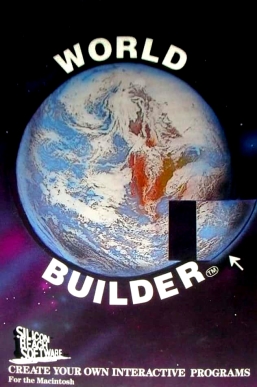
World Builder is a game creation system for point-and-click adventure games. It was released for Macintosh in 1986 by Silicon Beach Software and had already been used for creating Enchanted Scepters in 1984. On August 7, 1995, developer William C. Appleton released World Builder as freeware.

Jump Raven was the second game released by Cyberflix, in 1994. The game's technology is similar to that of Lunicus, released by Cyberflix one year prior, but this time employs a more detailed storyline and environment. In an opening sequence of the game, we see future New York City, which has fallen into horrible disrepair in the aftermath of global warming and rising sea levels and a bankrupt federal government. The premise of the story is that gangsters, neo-nazis, and various other thugs have acquired large stores of weapons and have ransacked New York's store of cryogenically-frozen DNA of endangered species. The player's job as a bounty hunter is to retrieve them.
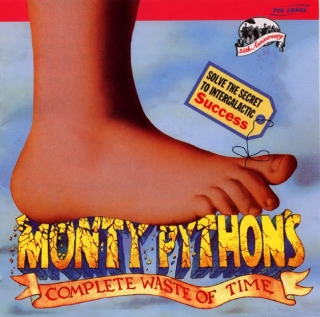
Monty Python's Complete Waste of Time is a collection of minigames, screensavers, desktop wallpaper and icons for Mac OS System 7 and Windows released in 1994 by 7th Level, Inc. It was brought on board the Mir Space Station by astronaut Andy Thomas.

Media Vision Technology, Inc., was an American electronics manufacturer of primarily computer sound cards and CD-ROM kits, operating from 1990 to approximately 1995 in Fremont, California. Media Vision was widely known for its Pro AudioSpectrum PC sound cards—which it often bundled with CD-ROM drives—it is also known for its spectacular growth and demise.

CyberFlix Incorporated was a computer game company founded in 1993 by Bill Appleton. CyberFlix was based in Knoxville, Tennessee. They made many interactive story-telling games in the 1990s, but stopped any and all productions in 1998 before finally going out of business in 2006.
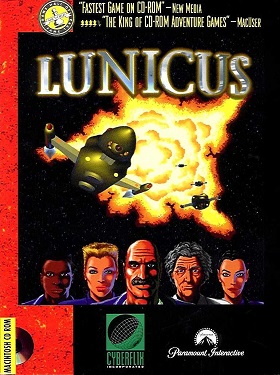
Lunicus is a 1993 computer game developed by Cyberflix and published by Paramount Interactive. It shares many traits in both graphical style and gameplay with some of Cyberflix's other games, like Jump Raven. It was rated as 1993 CD-ROM game of the year in the magazine MacWorld.
BBC Multimedia was a division of the BBC which dealt with the publishing of computer-game versions of well-known BBC television programmes.
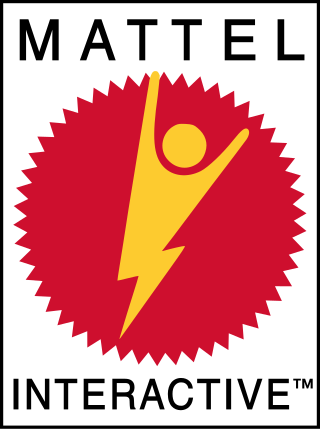
Mattel Interactive was a video game publisher and software distributor.
The Magic School Bus is a series of educational software video games developed by Music Pen and published by Microsoft via their Microsoft Home brand. The interactive adventures are part of the larger franchise and based with The Magic School Bus original series books and public television series.
Andrew Nelson is a writer and professor living in New Orleans. He worked as a senior producer of Britannica.com, a creative director for Cyberflix, a visiting professor at Loyola University New Orleans, and a Public Relations and Social Media Account professional at Peter A. Mayer Advertising in New Orleans. Two computer games he developed for CyberFlix – Titanic: Adventure Out of Time (1996) and Dust: A Tale of the Wired West (1995) – were bestselling PC game and Macintosh Games of the Year. In 2007 he was awarded a Lowell Thomas Award for his work with the Society. He is a writer-at-large for Salon, National Geographic Traveler, ReadyMade, The New York Times, Via magazine, Weekend Sherpa and San Francisco Magazine.
Star Trek: The Next Generation Interactive Technical Manual is a multimedia application software program published by Simon and Schuster Interactive in 1994. Based on the then-recently ended TV series Star Trek: The Next Generation, it allows users to explore a computer-generated simulation of the spacecraft USS Enterprise NCC-1701-D, the principal setting of the series. The software uses Apple Computer's QuickTime VR, a technology which enables users to view every side of 3D rendered objects, and includes a virtual tour given by Jonathan Frakes. The Interactive Technical Manual was billed as the first CD-ROM title built with QuickTime VR.
DreamFactory is a Las Vegas, Nevada-based software company. DreamFactory develops both commercial and open-source software that provides a self-hosted integration-platform-as-a-service to multiple applications in cloud-based or on-premise environments. DreamFactory can be deployed on-premise or in the company's cloud environment.

Appery.io is a cloud-based HTML5, Ionic, jQuery Mobile, and hybrid app-building platform for developing mobile apps, web apps, and PWA s. Appery.io is a browser-based drag-and-drop visual builder tool that supports Android and iOS with integrated Apache Cordova/PhoneGap output.. The platform is used by DIYers to create apps for their customers.
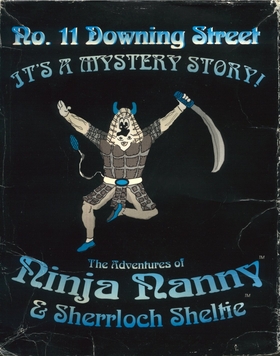
The Adventures of Ninja Nanny & Sherrloch Sheltie: No. 11 Downing Street is a 1993 game by Silicon Alley for Windows 3.0 systems, and is an interactive fiction title with multimedia elements integrated into the text. Despite its marketing as an "educational" game, Ninja Nanny became notable after its release for its unusual and nonsensical content.
References
- ↑ Erik Ashok Meers (18 September 1995). "Talking With…Bill Appleton". People Magazine. Retrieved 16 October 2012.
- ↑ Moss, Richard (September 2018). The Secret History of Mac Gaming. Unbound. p. 42. ISBN 978-1-78352-486-0.
- ↑ Moss, Richard (September 2018). The Secret History of Mac Gaming. Unbound. p. 188. ISBN 978-1-78352-486-0.
- ↑ "We make an open source REST API backend for mobile, web, and IoT applications". The Silicon Review. 1 July 2017.
- ↑ "Apparatus and method for digital movie production". Google Patents. 1 July 1997. Retrieved 14 October 2012.
- ↑ "Method and apparatus for displaying movies using Z-data information". Google Patents. 17 March 1998. Retrieved 14 October 2012.
- ↑ "Cyberflix Incorporated". Moby Games. 1 February 2000.
- ↑ Nik Cubrilovic (6 March 2006). "Exclusive: Salesforce Business Mashups, New Developer Community". TechCrunch. Retrieved 19 November 2012.
- ↑ James Coats (10 December 1993). "Paramount Wants Cd-rom to Imitate Life – Warts And All". Chicago Tribune. Retrieved 14 October 2012.
- ↑ "Sailing the digital seas". U.S. News & World Report. 24 June 1996.
- ↑ Barbara Kantrowitz (28 August 1994). "Garage-Band Programmers". Newsweek (The Daily Beast). Retrieved 12 November 2012.
- 1 2 3 "Titanic: Adventure Out of Time". CUC Software. October 1998.
- ↑ Brad Stone and Arlyn Gajilan (16 September 1996). "A Spy in the Cold". Newsweek.
- ↑ "Titanic". Seeking Alphas. November 1996.
- ↑ "Cyberflix's Titanic Joins International Research Effort in North Atlantic". Cyberflix Incorporated. June 1996.
- ↑ "Top Game: Titanic". MacHome Journal. September 1997.
- ↑ James Black (February 1998). "Making Dreams in Knoxville". Southern Living.
- ↑ "Thought Leaders in the Cloud: Talking with Bill Appleton, DreamFactory Founder and Cloud Services Expert". Microsoft Azure. 1 February 2011.
- ↑ Ronda Robinson (20 November 2006). "On-demand software company replaces Appleton's fun 'n' games". Knoxville Business Journal. Archived from the original on 27 January 2013. Retrieved 14 October 2012.